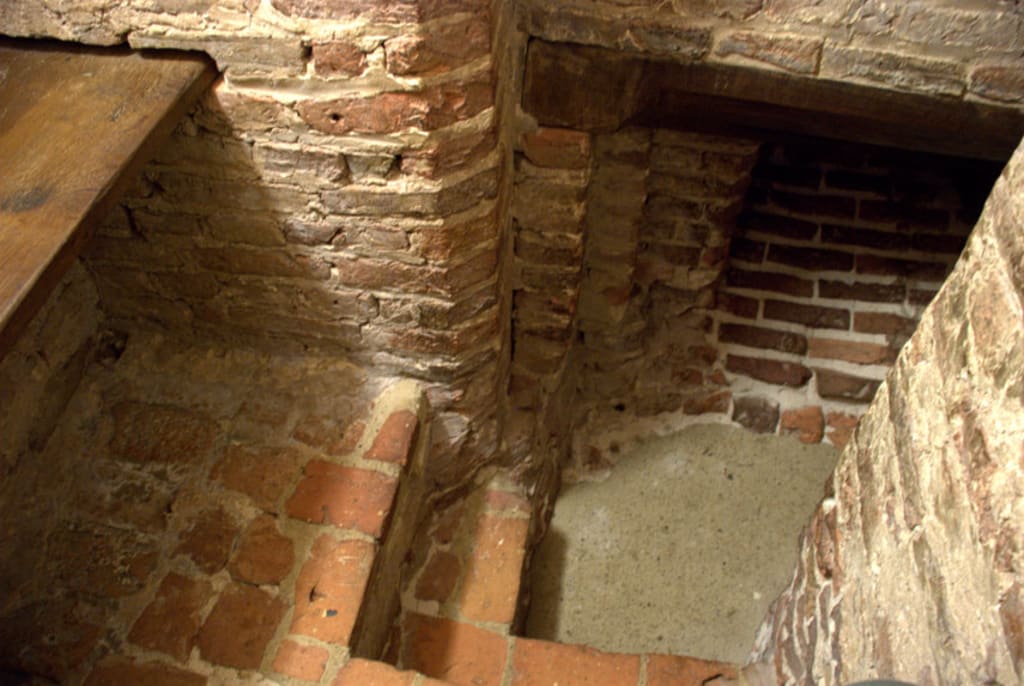Goosie Goosie Gander
The meaning of a well-known children's rhyme

A familiar nursery rhyme
Goosie goosie gander,
Whither shall I wander?
Upstairs and downstairs
And in my lady’s chamber.
There I met an old man
Who wouldn’t say his prayers;
I took him by the left leg
And threw him down the stairs.
This English nursery rhyme has its origins in the 16th century, which was a dangerous time for English Catholics during the reign of Queen Elizabeth I. The country was now firmly Protestant and being a Catholic was against the law. With England under constant threat from Catholic Europe, a practising Catholic was regarded as a dangerous alien and therefore subject to political as well as religious suspicion, much as Muslims are regarded today by some paranoid westerners.
However, many families, although outwardly going along with the mood of the time, were secretly still Catholic and went to extraordinary lengths to continue to practice their faith.
Being Catholic, they could not remain faithful without the help of a Catholic priest. They believed, for example, that an unbaptised child was condemned to Hell, as was anyone who had not received the last rites before they died. They also needed to hear Mass on a regular basis.
Catholic priests therefore toured the country in disguise, visiting families who needed their services. The authorities had a pretty good idea who the Catholic families were and therefore kept a close eye on comings and goings in the neighbourhood. Elizabeth was served by a network of spies and informers, so there was a constant battle going on between the forces of law and order and the Catholic families as to who could outwit the other.
The rhyme describes a visit to a country house by an officer who suspects that a Catholic priest is on the premises. It is still possible to view houses of the period that contain what are known as “priest holes”, namely hiding places into which a priest could be secreted when there was a knock on the door. These could be under staircases, behind fireplaces, or in cupboards in bedrooms that could only be opened by activating a secret handle.
The above photo is of the priest hole at Oxburgh Hall in Norfolk, which visitors are welcome to squeeze into if they are reasonably fit and consider themselves able to get out of it again!
A closer look at the rhyme
The “goose” of the opening line could be a reference to a Roman Catholic priest, given the connection between Rome and geese in the legend of ancient Rome being saved by the honking of geese.
The officer searches all over the house, including the “lady’s chamber”. If he has any experience of such matters he will probably know most of the tricks for creating a priest hole, and so finding an “old man” would not be difficult. Many priests would be elderly because the only young priests in the country would be ones who had been smuggled in from aboard – the majority would be priests who had been ordained years before and had “gone underground” when Elizabeth came to the throne in 1558.
If a suspected priest was found he would be challenged to recite the prayers prescribed by the Anglican Book of Common Prayer. As a Catholic he would be unable or unwilling to do this.
The punishment of being thrown down the stairs would only be the start of what a captured priest could expect. Since being a Catholic was a treasonable act, for which the penalty was death by the barbarous method of hanging, drawing and quartering, a priest could expect no less and would probably have to undergo many painful tortures as the officers tried to force him to reveal the names of his clients.
However, for a children’s rhyme, a rapid descent of the staircase was no doubt considered sufficient to get the message across!
About the Creator
John Welford
I am a retired librarian, having spent most of my career in academic and industrial libraries.
I write on a number of subjects and also write stories as a member of the "Hinckley Scribblers".






Comments
There are no comments for this story
Be the first to respond and start the conversation.